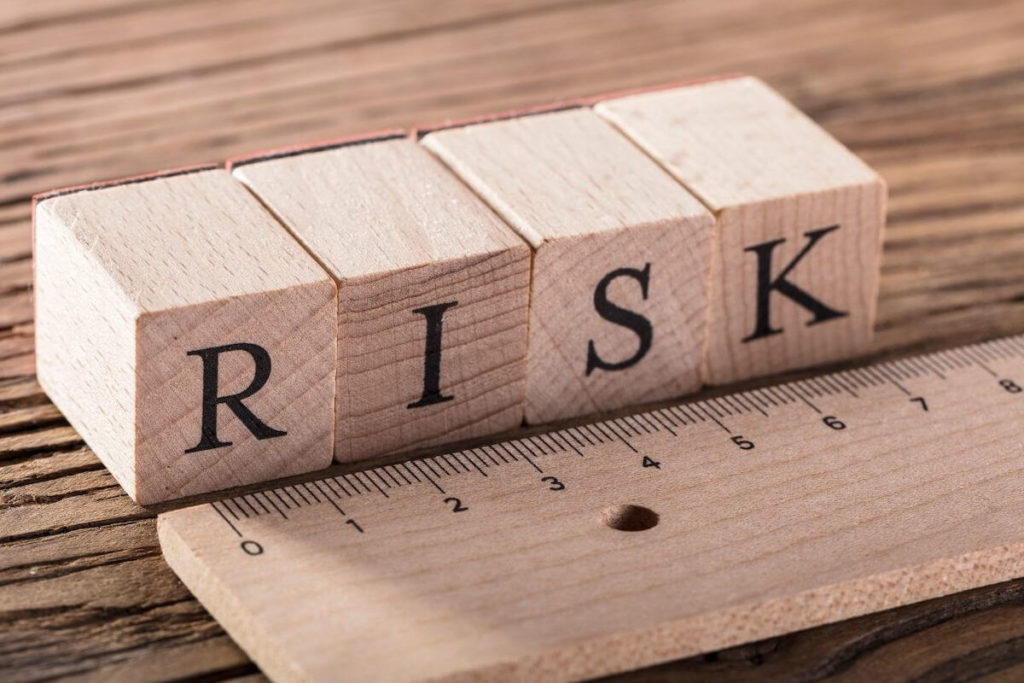When it comes to business sales in the lower middle market (annual sales approximately $5M to $50M), the valuation multiple has probably spawned more M&A fish stories than any other feature of deal structure.
“Someone in my industry just sold their business for 10 times,” business owners will exclaim, adding that the same buddy told them the average multiple for the industry was eight. Eye-popping valuation multiples make for great stories in national business publications and conference rooms alike.
But what does the valuation multiple represent, and how do buyers arrive at that particular number?
In this article, we’ll get past the stuff of legends and discuss what a valuation multiple says about a business, how the multiple is determined, and how sellers can nudge that multiple higher.
How the Valuation Multiple Impacts Enterprise Value
There are a number of ways to value a privately-held company. Some valuation methods are forward-looking, like discounted cash flow (DCF). DCF is often used for businesses that have yet to make a profit, are experiencing high growth rates, or are in high growth industries. Book value can be appropriate in some cases, as can equity value when valuing share price.
The price to earnings ratio (p/e ratio or p/e multiple) is another valuation metric that may seem familiar if you track the stock price of public companies or listen to Squawk Box.
But when it comes to small business valuation, the most common valuation method is market value or enterprise value (depending on whether the deal is structured as a stock or asset sale). The market value of a business is based on comparable companies and follows a deceptively simple formula:
Pre-Tax Earnings x Valuation Multiple = Value
This looks like an extremely straightforward calculation. But pinning down pre-tax earnings and enterprise value multiples – referred to as simply a multiple, or multiplier – can be like nailing Jell-O to the wall.
Note: The multiplier can also be thought of as the inverse of a capitalization or cap rate. The formula above is simply expressed in a numerator and denominator format: Value = Pre-Tax Earnings / Cap Rate
What Is Considered Pre-Tax Earnings?
The pre-tax earnings metric used to value a business can depend on a number of factors, including the industry, size of the business, and type of buyer. The most common pre-tax earning metrics used to value a small business include:
- Earnings Before Interest, Taxes, Depreciation & Amortization (EBITDA)
- Earnings Before Interest, Taxes & Depreciation (EBIT)
- Cash Flow or Free Cash Flow
- Seller’s Discretionary Earnings or Owner’s Benefit
In order to value an acquisition target and make an offer to purchase, buyers will start by looking at the last three to five years’ worth of financial statements and tax returns for a business. With that information they will determine what earnings metric is the most relevant, and what level of pre-tax earnings the business can generate reliably on an annual basis.
For example, let’s say a business for sale generates consistent profitability in terms of both net income and earnings, with a three-year average EBITDA of $1.5M. Furthermore, let’s say that the average multiple range in this business’ industry is between 4 and 6. So, the market value of the business would range from $6M to $9M.
$1,500,000 x 4.0 = $6,000,000
$1,500,000 x 6.0 = $9,000,000
If you’re the seller, you’d clearly prefer that your business sell at the higher end of the multiple range. But how can you make that happen?
How the Valuation Multiple Is Determined
There is no public stock exchange for privately held companies. Unlike publicly traded stocks, or real estate, you cannot see the share price of a small business in the news or find out what it sold for on a Multiple Listing Service (MLS). Privately held company transactions are just that: Private.
There are, however, a number of proxies for a MLS for small businesses sold. Business brokers and M&A advisors contribute anonymous, aggregate data to these sources in order to have a real-world database of done deals. You can also see closed transaction data where Small Business Administration (SBA) guaranteed loans were involved at Peercomps (subscription required).
Business brokers and M&A advisors use these databases to research multiples for similar businesses; that is, businesses similar in size and financial performance that are in the same industry as the business for sale.
Here’s a quick example of how multiples research is used to value a business.
Step 1: Pull comparable company data from completed transactions database
The Peercomps database, which provides information on transactions that used an SBA loan as part of the buyer’s capital structure, shows 25 commercial sign manufacturing businesses (NAICS 339950) sold since 2018. Again, these were only transactions that used SBA guaranteed loans.
Step 2: Refine data set
Let’s say our target company in this industry does $3M in annual sales, so we’d like to refine our list of companies so that we only see deals where the business sold did between $1M and $5M in annual sales. There’s a lot of judgement used in this process, but in general, we want to look at businesses that aren’t significantly smaller or larger than the target company being valued.
When we refine our initial Peercomps search using the gross sales parameter of $1M to $5M, we get a list of 15 similar commercial sign manufacturers sold since 2018. Looking at the EBITDA multiple for these sold business, here’s what we find:
- Minimum: 3.17
- Maximum: 4.95
- Mean: 4.13
- Median: 4.05
Step 3: Compare target company to sold-company data
There’s a lot of subjectivity involved when it comes to valuing a business. And there’s a limit to what we know about the businesses that were sold. But we can see a few performance metrics in the data. For example, the EBITDA margin average was 16% for the 15 companies on the list.
Buyers will be comparing the financial performance of your business to the overall industry averages, as well as the averages for similar businesses sold in your industry. This is why you should be benchmarking your business against the industry averages on a regular basis.
Which end of the valuation multiple range your business falls on will be influenced by how it looks compared to other businesses in its industry: The better the business, the higher the multiple.
But the valuation multiple can really be boiled down to one word: Risk.
What the Valuation Multiple Really Represents

As business owners, we get used to the level of risk associated with running our business day in and day out, year in and year out. Buyers, on the other hand, are looking at every possible risk – and analyzing those risks – when they’re considering a business to acquire.
This is to be expected, of course. Buyers view your business as an investment. They will be looking at the risk in your business, as well as the return, and comparing that to the risk and return associated with an alternative investment (usually another business).
Here are just a few of the risks that buyers will analyze in a business:
- Customer concentration
- Supplier concentration
- Gross margins compared to industry averages
- Net margins compared to industry averages
- Wage expense compared to industry average
- Consistency of financial performance
- Owner reliance
- Competition
- Strength of management team
- Industry & industry outlook
- Future growth opportunities (or lack thereof)
In short, the less risk there is in your business, the more it will be worth to buyers.
Want a Higher Multiple? Lower Risk
It can be difficult to completely de-risk your business. Risk is just a part of the great game of entrepreneurship. But there are ways you can lower or mitigate the risk associated with your business, which will result in a higher multiple – and increased value – in the eyes of a buyer.
#1. Dominate a Niche in Your Industry
We once worked with the owners of a digital printing business. The company developed a niche by offering round-the-clock expedited service to customers in the financial services and pharmaceutical industries. Another digital printer we worked with specialized in rapid packaging prototypes for companies selling products to Walmart.
Whether it’s construction or consumables, dominating a niche in your industry goes a long way towards increasing the valuation multiple when you sell your business.
#2. Create Recurring Revenue Streams
Generating new sales is one of the most vital endeavors at any business. If you have to beat the bushes to find every new customer, however, buyers will view generating revenue at your business as risky.
Similarly, if you as the owner are personally responsible for generating sales at your business, buyers will wonder how the business will continue to win new customers without you. You need a system in place that reliably brings in revenue, with or without you.
We once worked with the owner of a commercial heating, ventilation and air conditioning (HVAC) business who had “evergreen” contracts in place with all customers. The contracts would renew annually until canceled, something only one percent of his customers would do. As a result, he could be relatively certain that 99% of his customers would still be doing business with the company the next year.
Note: The most risky revenue stream tends to come from a bid process, while the least risky is a subscription model.
#3. Outperform Industry Averages
As mentioned above, buyers will compare financial ratio metrics at your company (i.e., gross margins, net margins, major expenses like rent or payroll as a percent of sales) to averages for similar companies in your industry.
One of the digital printing businesses mentioned above had pre-tax profit margins that were consistently almost three times the industry average. As a result, the business sold for a valuation multiple at the highest end of its range.
Again, make benchmarking key statistics, metrics, and ratios against the industry part of the overall management of your business. There is little to no cost to track this information, and the payoff could be significant when you decide to sell your business.
#4. Show Consistent or Improving Financial Performance
No business is perfect, but you’ll want the financials of your business to look as good as possible when it comes time to sell. If sales or profitability are down at your business, it’s possible that the dip will result in a lower valuation multiple. There may be a perfectly plausible reason why the numbers were down, but we have yet to meet a buyer who will overlook a blip in your company’s performance.
Athletes do their utmost to peak at the right moment — not too early or too late, but at the precise moment when they need to outshine the competition. The ideal time to take a business to market is when it has been showing consistent — or better yet, improving — financial performance for the past three to five years.
#5. Make Yourself (Owner) Operationally Irrelevant
You may see yourself as your business’ biggest asset, and back when you started it that may have been the case. Those days are gone.
Buyers view the owner as one of the primary risks associated with a business. In fact, the smaller the business, the more reliant it typically is on the owner, the riskier it is, and the less it’s worth.
Put yourself in the buyer’s (and the lender’s) shoes. They want to know that the business will run just the way it always has when you’re no longer at the helm.
A quick litmus test for whether or not you are operationally irrelevant at your business is to take a vacation – the longer the better. If you can go on vacation for six weeks without the wheels falling off at your business, you’re probably in good shape.
Think of an EBITDA Multiple as a Scorecard
There is a lot (and we mean a lot) of subjectivity involved in ascertaining the value of a company, regardless of size or industry. In this way, it’s a bit like a sport – think gymnastics or diving – that is judged.
You’ll want to do everything you possibly can leading up to the sale of your business to impress the judges (buyers) so that your business will merit the highest possible score (multiple). Some buyers will give your business higher marks than others, but all will be doing the same type of valuation multiples analysis discussed here.
If you’d like to know how buyers will view your business, including an expected valuation and multiple range, reach out to the advisors at Allan Taylor & Co. today.
Barbara Taylor is the co-founder of Allan Taylor & Co. You can connect with her on Twitter @ballantaylor and LinkedIn.



